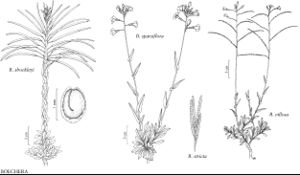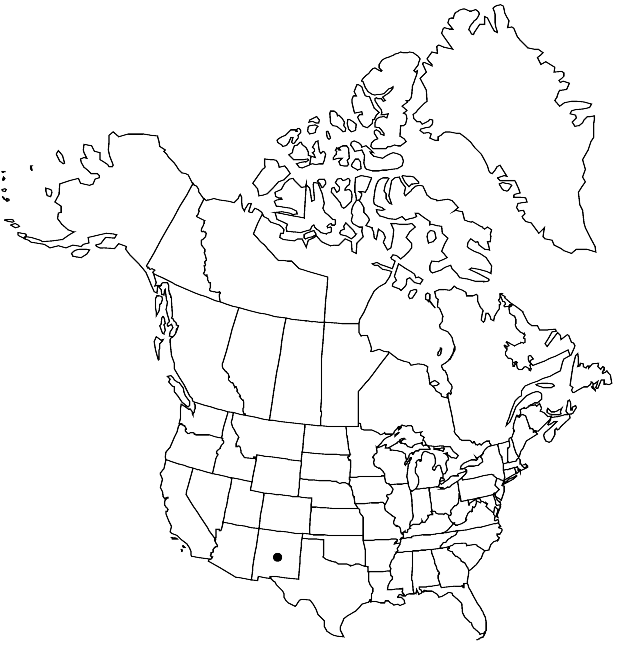Boechera villosa
Harvard Pap. Bot. 11: 86. 2006.
Perennials; short-lived; sexual; caudex not woody. Stems 1–3 per caudex branch, arising laterally proximal to sterile shoots near ground surface, ca. 2.5 dm, densely pubescent proximally, trichomes simple and 2-rayed, 0.25–0.7 mm, glabrescent distally. Basal leaves: blade oblanceolate to obovate, 2.5–5 mm wide, margins entire, ciliate along petiole, trichomes (simple), to 1 mm, surfaces densely pubescent, trichomes simple and short-stalked, 2-rayed or 3-rayed, 0.25–0.5 mm. Cauline leaves: 4–6, not concealing stem; blade auricles ca. 1 mm, surfaces of distalmost leaves sparsely pubescent. Racemes 6–10-flowered, unbranched. Fruiting pedicels ascending, straight, 6–10 mm, glabrous or sparsely pubescent, trichomes subappressed, branched. Flowers ascending at anthesis; sepals pubescent; petals lavender, 4–5 × 1–1.5 mm, glabrous; pollen ellipsoid. Fruits divaricate-ascending, not appressed to rachis, not secund, slightly curved, edges parallel, 4–5 cm × ca. 1 mm; valves glabrous; ovules ca. 64 per ovary; style ca. 0.2 mm. Seeds uniseriate, (none mature).
Phenology: Flowering May.
Habitat: Basalt outcrop in pinyon-juniper woodlands
Elevation: ca. 2100 m
Discussion
Boechera villosa is known only from the type collection from the Rio Grande Gorge in Taos County. The holotype was originally identified as Arabis (Boechera) perennans but clearly is more closely related to B. pallidifolia (see M. D. Windham and I. A. Al-Shehbaz 2006 for detailed comparison).
Selected References
None.
Lower Taxa
"elongated" is not a number."thick" is not a number.

